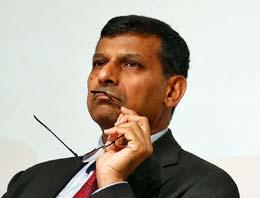Raghuram Rajan hits back at critics: “You can fool all of the people only some of the time”

By Madhura Karnik,
Special to The post
Raghuram Rajan will return to academia once his term as governor of India’s central bank ends in September.
Although the precise reasons for Rajan’s exit from the Reserve Bank of India (RBI) are unclear, there has been friction between him and the Narendra Modi government over interest rates. The governor preferred higher rates so that inflation could be kept in check, while the government pushed for lower rates to stimulate growth.
In a speech—his first public appearance after he announced his exit—on June 20 in Mumbai, Rajan hit back at his critics and defended his actions. His explanation is pretty straightforward: low interest rates aren’t sustainable for economic growth in the long run.
There is indeed a short run trade-off between inflation and growth. In layman’s terms, if the central bank cuts the interest rate by 100 basis points today, and banks pass it on, then demand will pick up and we could get stronger growth for a while, especially if economic players are surprised. The stock market may shoot up for a few days. But you can fool all of the people only some of the time. If the economy is producing at potential, we would quickly see shortages and a sharp rise in inflation. People will also start expecting the central bank to disregard inflation (that is, be hopelessly dovish according to the bird analogies that abound) and embed high inflationary expectations into their decisions, including their demand for higher wages.
The case for low rates
Rajan explained the rationale behind the RBI’s hawkish stance on interest rates. Indicating that he was right in not cutting rates extensively, he said that the central bank doesn’t focus only on inflation “to the exclusion of growth.”
“If inflation rises sharply, for instance, because of a sharp rise in the price of oil, it would not be sensible for a central bank to bring inflation within its target band immediately by raising interest rates so high as to kill all economic activity,” he explained.
“The RBI always sets the policy rate as low as it can, consistent with meeting its inflation objective. Indeed, the fact that inflation is fairly close to the upper bound of our target zone today suggests we have not been overly hawkish, and were wise to disregard advice in the past to cut more deeply,” Rajan added.
During his tenure, Rajan brought down the retail inflation to 5.76% in May from 9.52% in 2013.
“If a critic believes interest rates are excessively high, he either has to argue the government-set inflation target should be higher than it is today, or that the RBI is excessively pessimistic about the path of future inflation. He cannot have it both ways, want lower inflation as well as lower policy rates,” Rajan said.
The governor also spoke about the constant demand from businesses for lower rates.
“At one of my talks, an industrialist clamoured for a 4% rate on his borrowing,” Rajan recalled. “When I asked him if he would deposit at that rate in a safe bank, leave alone invest in one of his risky friends, he said ‘No!’ Nevertheless, he insisted on our cutting rates significantly. Unfortunately, policy-makers do not have the luxury of inconsistency.”
This piece was originally appeared in Quartz (qz.com). See http://qz.com/711723/raghuram-rajan-hits-back-at-critics-you-can-fool-all-of-the-people-only-some-of-the-time/









